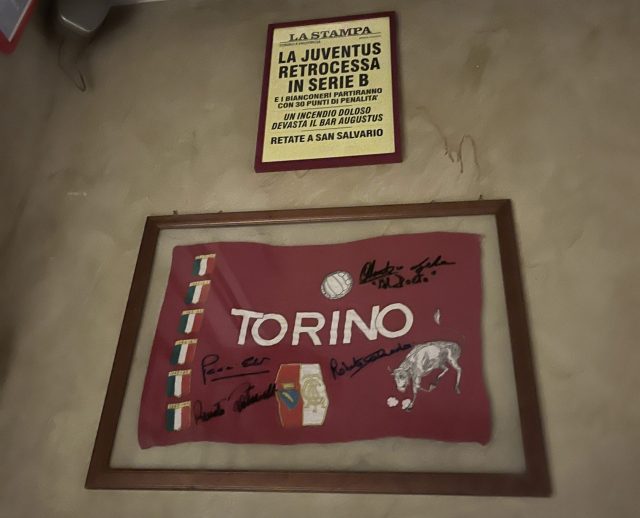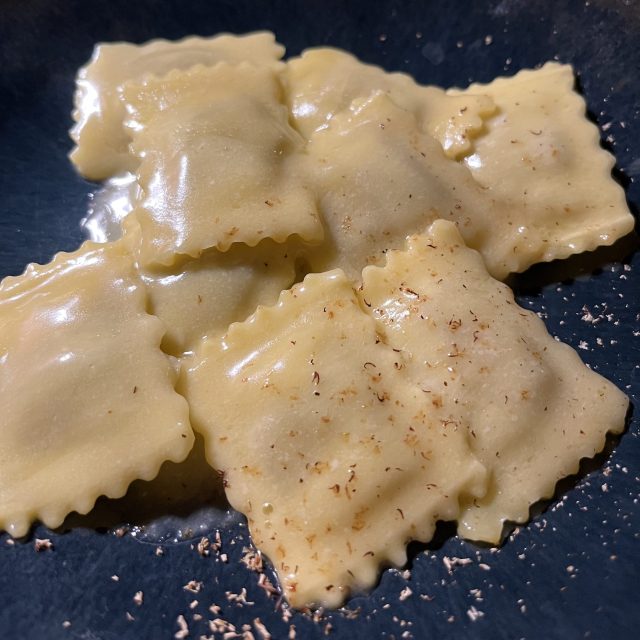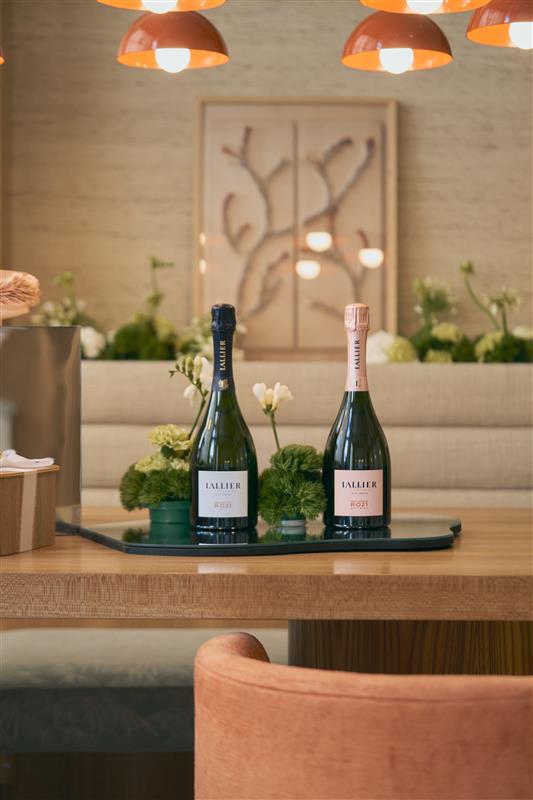db Eats: Ristorante Consorzio, Turin
Louis Thomas finds near-perfect Piemontese pairings and a charming atmosphere in Torino’s Ristorante Consorzio.

Staggering into a bar upon my arrival in the city, I asked what a typical Torinese cocktail might be, aware of the various vermouth-based concoctions that were born here. To my slight surprise, I was given an Aperol Spritz – pleasant, but perhaps not the ‘authentic’ first sip I wanted from my trip.
Fast forward 36 hours, and, having been dined on by the local mosquitoes, I find myself seated before a chequered table cloth at the pleasingly busy Ristorante Consorzio on Via Monte di Pietà. Advertised as an establishment with its feet firmly in Piemonte (if you’ll pardon the pun), I was optimistic that it would give me a true taste of Torino, or at least Piemonte.
Early signs were promising: a Torino F.C. pennant and a framed page from La Stampa commemorating the relegation of city rivals Juventus filled me with optimism (the waiter, whose name I regrettably did not catch, would later declare: “Torino is the only team in the city, the other one is for the South”).
On the other side, a large poster for La Grande Bouffe, Marco Ferreri’s sordid 1973 satire concerning a group of friends intent on gorging themselves to death, also reassured me of the team’s taste in cinema, though made me slightly trepidatious as to just how grand the portion sizes would be.

Fortunately, Ristorante Consorzio’s tables do not groan under the weight of colossal platters of steaming Piemontese mountain fodder – it is traditional cooking delivered with refinement and moderation.
While the a la carte menu featured plenty of alluring dishes (particularly ‘The Fifth Quarter’ offal assortment), I plumped for the tasting menu, which gives the diner two antipasti, a primo, secondo, and dolce for what seemed like a reasonable €42.
The wine list is impressive, with bottles from well beyond Piemonte. Upon discovering/me blurting out that I consider myself a wine journalist, the waiter suggested that perhaps he could pick a pairing for each course and, given I was here to get a sense of the region, he plucked for a Piemontese pour for each.
To pair with the first antipasto, beef tartare, the Valli Unite Derthona 2021 was selected. Made from the white Timorasso grape, this particular expression had seen some skin contact and some time in oak (I would speculate new).

While I’m more than happy for taboos concerning red wine with fish to be broken (as I found during my visit to Alex Webb’s restaurant), I must admit feeling that beef with white wine, no matter how much skin contact and oak it had seen, would not add up.
Fortunately, I was wrong – fillet famously is overwhelmingly a textural experience, with very little flavour on its own, so in this version, which eschewed gherkins and capers and ketchup in favour of olive oil and salt, the Timorasso had the right amount of aromatic restraint but good acidity to work with the extra drizzle of oil I was recommended to add.
Where the Derthona would really come into its own was with the second antipasto, the ‘crunchy egg’ – a breadcrumbed and fried egg served on top of a lilo of wilted Swiss chard in a pool of fondue, with a garnish of crispy pancetta. The whole dish had a whiff of a more grown up Eggs Florentine, with the bitter greens really complementing the subtle bitterness lent to the wine by its time on the skins. The waiter told me that he always finds eggs difficult to pair with, but I think his troubles may well be over because this was a winning combination.
The only slight hiccup of what was otherwise an excellent meal came with the primo – Agnolotti Gobbi: delicate envelopes of pasta filled with minced roasted meats and served doused in butter with a rasp of nutmeg. Though the flavour was good, and I was very glad to be eating such a rich dish at the cooler hour of 10pm rather than in the sweltering heat of midday, the texture of the filling (which I admittedly struggled to identify, but believe may have been veal) was somewhat pappy, reminding me of cheap tinned tuna.

Luckily, the wine brought me a bit more joy. The waiter shared that he had changed his mind from what he might usually offer (what that would be he didn’t say), and opted for something from Piemonte.
Created exclusively for Ristorante Consorzio by Ferdinando Principiano since 2018, it was a Dolcetto with a difference – firm tannins, a quality found in some expressions of the variety, nudged it out of the ‘easy drinking’ category I might normally place Dolcetto in, but that was no bad thing. It wasn’t my favourite pairing, and I do believe a softer Dolcetto might have actually been a slightly better match for my palate, but at €5 for a fairly generous glass, it was a very smart wine.
Partner Content
Ferdinando Principiano would also provide the wine for the secondo. Introducing me to the bottle, and it to me, the waiter simply said: “Of course, Barolo for the main.”
Of course. It would be rude not to.
The main in question to pair with the 2019 was a beef cheek braised in Ruché, served with a well-executed, if slightly unnecessary, purée of some description.
I must admit, the first mouthful took me off guard. I’m used to these sorts of braised dishes being rich and savoury, but the highly-reduced Ruché wine had given it a cheek puckering tartness that I did not expect. Once I had recovered from the bracing acidity, it proved to be excellent, the meat disintegrating upon collision with a fork, and a good amount of bread was provided for the all-important scarpetta.

When cooking with wine at home, I usually subscribe to the time-honoured philosophy of ‘a bit for the dish, the rest for me’ – part of the fun of dining out is that you don’t have to worry about the waste that comes with opening multiple bottles. Having had some Ruché on its own since that dinner, I must admit that it’s a style which is yet to win me over.
Unsurprisingly, the Barolo was a very good match, but with a wonderfully youthful, friendly, red fruit-forward vigour that I might not necessarily expect from the famously aloof king of wines.
The waiter told me that he had deliberately opted for a “non-traditional” expression, and shared that when his grandfather used to buy Dolcetto and Barbera in the 1960s and 70s, they would chuck in Barolo for free to get rid of the excess stock. It’s a very different picture today, with the glass being the most expensive of the evening, coming in at a still pleasingly affordable €12. Put some Barolo in a big Riedel and I’m a happy man, regardless of price.
As for the clearly good relationship between Consorzio and Principiano, he divulged that there was one fly in the ointment: “He’s a Juventus fan.”
Dessert soon wobbled over the table, just as I would soon wobble out of the restaurant. Panna cotta, accompanied by various reductions and blobs.
The pairing was something I had somehow not come across before, but was told was very typical for Piemonte: Chinato, served chilled.
Similar to a vermouth, it is a sweetened wine that has been aromatised, in this case with China calisaia, a bark containing that miraculous molecule quinine. The base wine for the version I was offered was Nebbiolo from Barberesco, an illustrious pedigree – some other versions use Nebbiolo from Barolo.
Telling the story of how this strange creation came to be, the waiter shared that it was probably a pharmacist, Giuseppe Cappellano from Alba, who first developed it, “then it became a medicine for drunks”.
Indeed, it could be a remedy for my numerous mosquito bites, though hopefully any antimalarial properties will not be necessary. With the exquisitely simple, uncomplicated creaminess of the panna cotta, it was a knockout success, and a splodge of reduced Chinato on the plate provided an even more intensely herbal, woody, Covonia-esque hit.
I will readily admit that Chinato will not be for everyone, even with the pairing of panna cotta, but as a fan of booze with a slightly medicinal quality, it did appeal to me, and that’s what really matters.
In total, for the tasting menu, wine pairings and coperto, it came to a respectable €80 on the nose. Though I still have almost a month left to feast my way through Torino, I’m already planning my next visit, perhaps to wrangle with ‘The Fifth Quarter’.
I was informed that Ristorante Consorzio also operates a wine bar, Banco, nearby on Via Botero. However, it was getting late by Northern European standards, and I was to sleep, perchance to digest.
Related reading: db Eats: I Portici, Bologna
Related news
Bottega celebrates Unesco recognition of Italian cuisine




